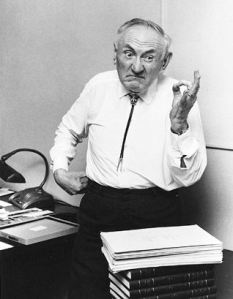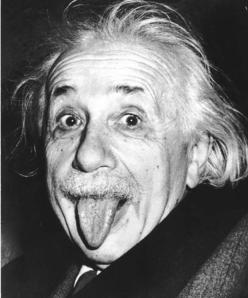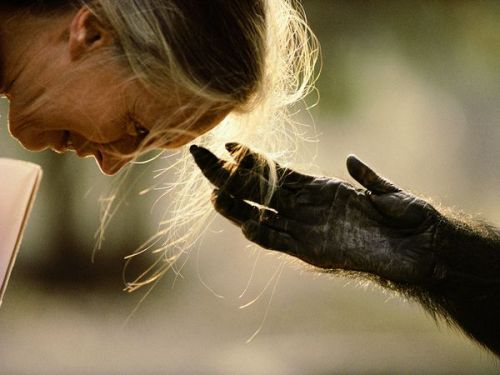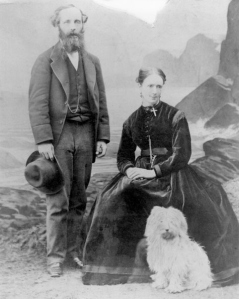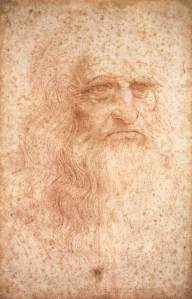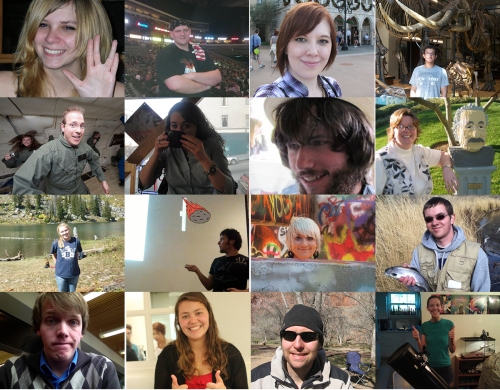by Shane L. Larson
“Is this the real life? Is this just fantasy?” So opens the classic rock song by Queen, Bohemian Rhapsody. Trying to understand modern gravity often puts one in the frame of mind that the mental machinations we go through are somehow not connected to reality. Albert Einstein’s genius was that he persevered through those uncomfortable feelings. He willfully ignored traditional ways of thinking about the real world, and imagined new and inventive ways to describe how Nature behaves.
One of those inventive ways of thinking was to noodle about unusual situations, like the Equivalence Principle. What a happy little thought — an idle daydream to imagine an elevator on the Earth, or flying in a rocket, and asking what would happen if you did something as simple as drop an apple? Dropping an apple is an act of everyday life, but the conclusion seemed almost a fantasy. Einstein’s thought experiment had discerned that there was no way for a person to distinguish if they are in a rocket controlled elevator, or under the influence of the gravity from a planet. At face value, the conclusions would seem to be this: since I can’t tell the difference between gravity and a rocket, maybe gravity isn’t real at all.
Any normal person might throw up their hands in exasperation and decide this discussion of the Equivalence Principle is nonsense and go work on something simpler (like brain neurochemistry). But Einstein was a persistent fellow, and pushed a little harder. He asked, “Is this the real life? Is this just fantasy?” Could it really be the case that there is no way to tell if you are in a gravitational field? What can we experience — what can we observe — that convinces us that we are caught in the grip of gravity?
We understand the world through experiments; they are the medium by which we observe. All experiments — thought experiments in particular — are recipes. Experiments produce results (knowledge about the Cosmos) the same way a recipe produces a cookie. We look at that result, and we ask ourselves a few fundamental questions — they are the same for physics experiments as cookies. Why is the result this way? Can I change what went into the result? Will I get a different result if I change what I put in?
![Science and baking are both built around experiments that seek to discover what small changes reveal about the thing you are looking at. In cookies, a relatively small change can change a chocolate cookie into an almost identical vanilla cookie (TOP). A more substantial but not completely different approach might make a peanut butter cookie (BOTTOM). But getting a chocolate chip cookie (RIGHT) takes a completely different approach. [Photo by S. Larson; I don't know what happened to these cookies after the #science was done; sorry.]](https://writescience.files.wordpress.com/2015/01/cookies.jpg?w=500&h=312)
Science and baking are both built around experiments that seek to discover what small changes reveal about the world. In cookies, a relatively small change can change a chocolate cookie into an almost identical vanilla cookie (TOP). A more substantial but not completely different approach might make a peanut butter cookie (BOTTOM). But getting a chocolate chip cookie (RIGHT) takes a completely different approach. [Photo by S. Larson; I don’t know what happened to these cookies after the #science was done; sorry.]
Why should that matter? Let’s imagine that our rooms were larger — much larger — and consider each of them in turn.
First, think about your room, on a spaceship. This is a BIG spaceship, of the sort that only the Galactic Empire has the metal and economic resources to build. The entire bottom of the spaceship is covered by rockets, all of them pushing with the same force to make you go. Now conduct the apple dropping experiment again, first at one end of the spaceship, and then at the other end, very far away. Both apple drops show the same thing — the apple falls directly down, parallel to the walls of your spaceship.

No matter how large you make a room, if it is being propelled uniformly by rockets, apples all over the room fall straight to the floor, along paths that are everywhere parallel to one another.
Now think about my room, on the planet Earth. This is a BIG room, far larger than any room ever built as it is large enough that if my floors are flat, the curvature of the Earth falls away from under my room at both ends (though I am not aware of this — no windows, right?). If I drop my apple at either end of my huge room I make an astonishing discovery — my apple does not fall parallel to the wall! It lands farther from the wall than it started. Given the outcome of my experiment, I could imagine all sorts of plausible explanations.
Maybe the walls are repulsive!
That’s an interesting idea; maybe it’s true, maybe it’s not. Can I test it?
Sure! I build a few new walls at different places in the big room and drop many apples many times. What I find is this: if a wall is closer to the center of the room, a dropped apple falls closer to straight down. At the exact center of the room, two apples fall straight down and land the same distance apart as when they were released. Two apples dropped at opposite ends of the room are closer together when they land on the floor! Physicists get grandiloquent about this and call it “tidal deviation.”
What is going on? The walls clearly aren’t repulsive — a wall in the center of the room doesn’t push apples away from it at all. We have talked about the lines of force that show the gravitational field. The gravitational field always points to the center of the source of gravity. What this experiment seems to show is that if my room is big enough, I can detect the shape of the gravitational field!

(TOP) When my apples are dropped, their paths are not parallel; we say there is a tidal deviation between the paths. This is a key experimental signature of gravity. (BOTTOM) We can understand the tidal deviation of the apple paths if we imagine they are following the lines of force in the gravitational field (this is how Newton would have explained it). But this is not the only way to explain gravity!
This idea of the shape of the gravitational field, and its relation to the motion of falling objects, would be a key part of Einstein’s mathematical development of general relativity: it led him to the thought that motion and geometry could be connected.
That may seem like an odd thought, but the fundamental building blocks of elementary geometry are exactly the elements of motion that we discovered in our Giant Room Apple Dropping Experiments: lines can be parallel or not parallel. Einstein recognized that was important, so he explored it. We can too! Let’s think about a flat table top.
If I have two Matchbox cars on my table, and give them a push, they travel in a straight line and never stop (in the absence of friction — every little kid’s dream!). If I take those two cars and set them in motion exactly parallel to one another, what happens? The two cars speed off across the table and their paths never cross, no matter how far they go. In many ways, this example is like our two apples on opposite ends of the Gigantic Rocket-Propelled Room — the apples both started falling on straight lines, parallel to each other, and they ended up hitting the floor falling on straight lines that were still parallel to each other.

On a flat surface, two lines that begin parallel stay parallel, no matter how far you extend the lines across the surface.
So this leads to the inevitable question: is there a way in geometry to make the Matchbox cars start out along parallel paths, but ultimately draw closer together? This would be analogous to the Gigantic Room the size of Earth, where apples dropped on opposite ends of the room landed closer together. As it turns out, the answer to this question is YES.
Imagine a sphere, like a playground ball or a desk globe. The surface of the globe is two dimensional, just like the table top — there are only two directions you can go: front-back, or left-right. Suppose I take my two cars and set them on the equator in different spots, but both are initially travelling due north — the paths are parallel! What happens? Eventually, the paths of the two cars get closer together, and if we wait long enough, they cross.

If two travellers start at the equator travelling due north, their paths are initially parallel. By the time they reach the top of the globe, their paths cross each other — the paths don’t remain parallel because of the curvature of the globe!
Now, that is no way for parallel lines to behave on a piece of flat two-dimensional paper, but it is perfectly acceptable on a two-dimensional curved surface. THIS is the watershed idea of general relativity — maybe we can describe gravity as curvature. Maybe we can replace the concept of a gravitational force with the idea of particles moving on a curved surface — on flat surfaces, motion along parallel paths stay parallel, but on curved surfaces initially parallel pathways can converge and cross.
Neat idea. But curvature of what?!
Einstein brilliantly deduced that since our concern is with the motion of things, it should be curvature of the quantities that we use to describe motion — space and time. Special relativity, which motivated our reconsideration of gravity, was wholly focused on how we measure space and time, and Einstein’s former professor, Hermann Minkowski, had discovered that individually space and time are artificial elements of a single medium — spacetime. Spacetime is the fabric of the Cosmos, the medium on which all things move. Einstein had become well versed in this notion, and concluded:
Gravity is the curvature of spacetime.
This is the heart of general relativity. So how does it work? General relativity is summarized mathematically by 10 coupled, non-linear, partial differential equations known as the Einstein Field Equations, succinctly written as
Fortunately for us, this mathematics can be captured in a simple, two-line mantra to guide intuition:
Space tells matter how to move.
Matter tells space how to curve.
In geometric gravity — general relativity — you can imagine spacetime like a large, deformable sheet. A particle can move anywhere on that sheet, so long as it stays on the sheet. In places where the sheet is flat (“flat space”) the particle moves in an absolutely straight line.
But what happens if a particle encounters a large depression on the sheet? The only rule is the particle has to stay in contact with the sheet. It continues to travel in the straightest line it can, but if its path dips down into the depression, the direction the particle is travelling is slightly altered, such that when it emerges on the far side, it is travelling in a new direction that is not parallel to its original course! Space tells matter how to move, with its shape.

Far from sources of gravity (edges of the sheet) spacetime is flat, and objects travel on straight lines. Small masses warp spacetime into a gravitational well (left dimple), while larger masses make larger gravitational wells (right dimple). If a particle comes close to a gravitational well, the curvature of spacetime bends its pathway. If a particle gets trapped in a gravitational well, the curvature of spacetime forces it to travel on a closed pathway — an orbit.
How do you curve spacetime? With matter. The large, deformable sheet of spacetime is dimpled wherever there is a large concentration of mass; the larger the mass, the larger the dimple. Matter tells space how to curve, with its mass. The larger the dimple, the larger deflection a particle passing nearby will feel. This at last, is the long awaited connection to the way we think about Newtonian gravity — the source of gravity is always matter, as we expected.
So we have done away with the concept of a “gravitational force field” and replaced it with the idea of “motion on a curved spacetime.” An astute reader will ask a pertinent question: if general relativity is really the way gravity works, why didn’t we discover it first? Where did Newtonian gravity come from?
Both Newtonian gravity and general relativity make exactly the same predictions when gravity is weak and speeds are slow. In fact, mathematically, general relativity looks just like Newtonian gravity at slow speeds and in weak gravity. These are precisely the conditions we encounter in the solar system, which is why Newtonian gravity was discovered first, instead of general relativity!
![You may have encountered models of spacetime gravitational wells out in the world. This one, in the Milwaukee Airport, captures coins for a museum. [Photo by K. Breivik]](https://writescience.files.wordpress.com/2015/01/milwaukeeairportgravitywell.jpg?w=500&h=667)
You may have encountered models of spacetime gravitational wells out in the world. This one, in the Milwaukee Airport, captures coins for a museum. [Photo by K. Breivik]
PS: I rather enjoyed using Bohemian Rhapsody to start this bit of the General Relativity story. It was written by the great Freddie Mercury for Queen’s 1975 album, “A Night at the Opera.” As we shall see in our next installment, Mercury (the planet) plays an important role in bringing the importance of General Relativity to the attention of the scientific community, just like Mercury (Freddie) helped me explain it here. 🙂
PPS: This week I couldn’t capture all of this in one 3 minute video, so I tried to do it in two.
—————————————
This post is part of an ongoing series written for the General Relativity Centennial, celebrating 100 years of gravity (1915-2015). You can find the first post in the series, with links to the successive posts in this series here: http://wp.me/p19G0g-ru.




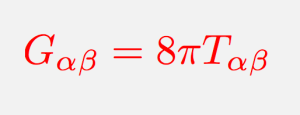


![[Top] You and I conduct identical experiments (dropping apples) in enclosed spaces and get identical results. [BOTTOM] The reality of what is outside our little rooms may be completely different! A falling apple is equally well explained by the gravity of a planet, or by an accelerating rocket!](https://writescience.files.wordpress.com/2015/01/equivalence_fallingapples.jpg?w=500&h=603)
![[TOP] You and I both find ourselves weightless, floating without feeling forces acting on us. [BOTTOM] The reality external to our rooms could be that we are floating in space, or that we are in a freely falling elevator plummeting to our doom.](https://writescience.files.wordpress.com/2015/01/equivalence_freefall.jpg?w=500&h=607)

![This is how I often imagine Einstein’s life during the years he worked in the Bern patent office! [From "The Far Side" by Gary Larson]](https://writescience.files.wordpress.com/2015/01/farside_physicshiggins_sm.jpg?w=500&h=461)

